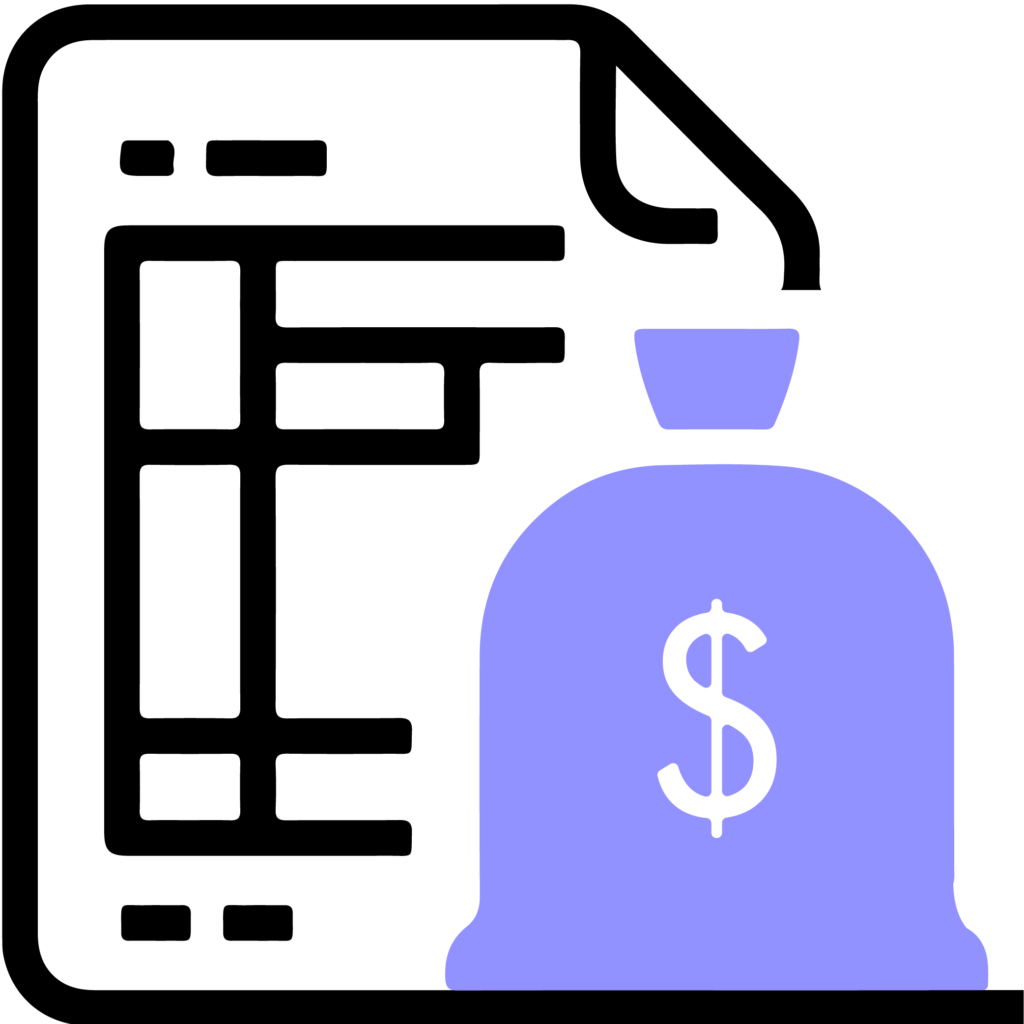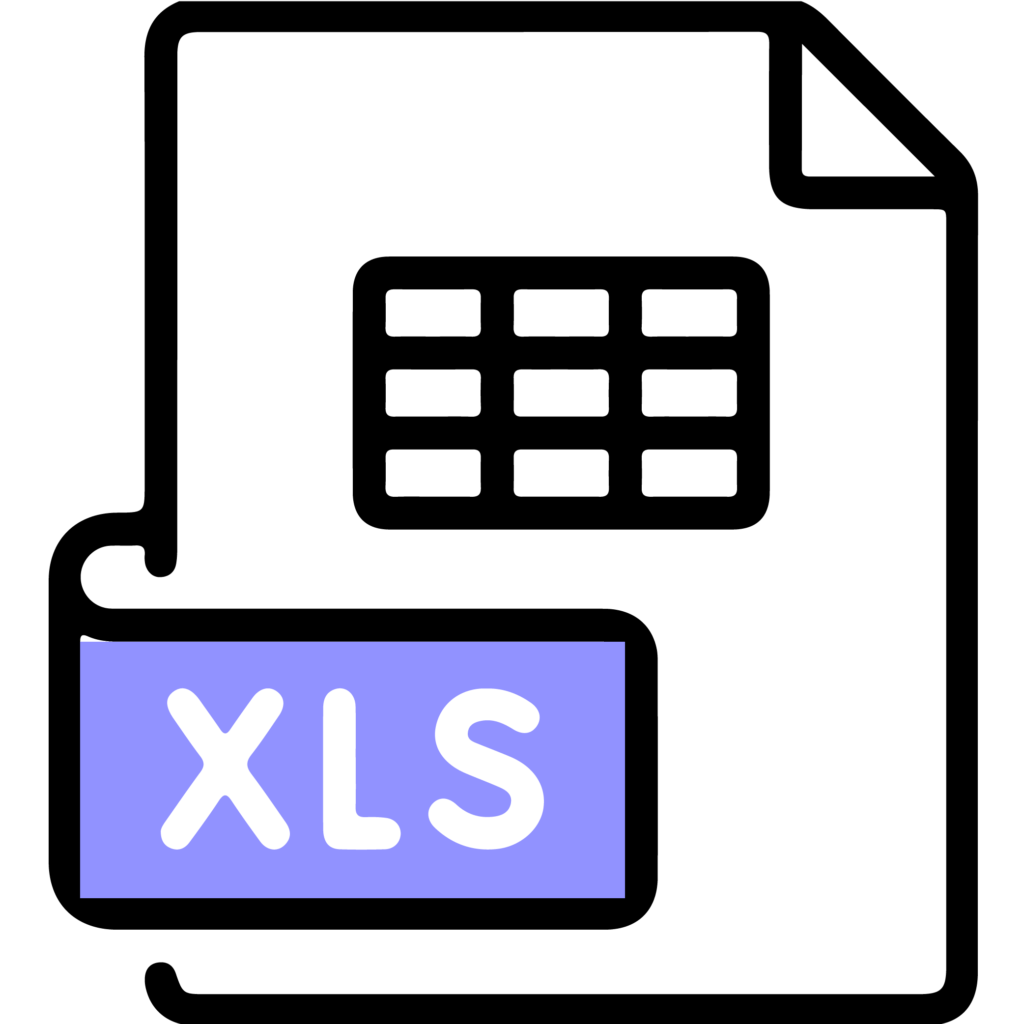
What is financial Modelling?
Financial modelling is the building of a startup’s financial projections for a specific period for investors. By this projection, you can find out the future growth prospects of the startups. Accordingly, it is a process of creating a summarised sheet of startups’ expenses and income and anticipating future financial decisions. Thus, financial modelling is about understanding how a startup works in the selected period and clarifying the fund utilisation.
Building a financial model or plan could be overwhelming, especially when venturing into a new business. But the investors who expect to invest in an innovative and unique business idea are primarily interested to know about the startup’s financial model.
The idea of the financial model is to create a positive impact by showing some credible information in numbers which that new venture can achieve. Investors usually put considerable time into validating the numbers presented because the soundness of the numbers and the logic behind them is the way to identify whether it is worth investing in. Further, With a suitable financial model, investors will evaluate the potential value of a business idea and how well it can compete with similar industries.
Creating a financial model is entirely dependent on the nature of the startups. Each startup will have a different flavour and another way to represent its economic model contemplations. Financial Modelling is the core element of making vital financial decisions in the corporate world. This guide takes you through all the tiny details of getting to your perfect economic model.

Where is Financial Modelling Used For?
Financial models pave the way to making better financial decisions. The following are the major applications of financial modelling;
- The financial model is used to decide startup valuation, the fair value for a startup.
- Enhance financial decisions by planning their long-term goals according to possible scenarios.
- Helps in decision-making on matters relating to the cost of capital when investing in a new project.
- Helps to allocate resources for investment or expenditure.
- Further benefits to raising funds from investors by validating the numbers presented in financials.

Who Needs a Financial Model & When Do You Need One?
Preparing the financial model has a variety of reasons. The following pointers help you to understand the users and their need for financial models;
- Investment banks use financial modelling to compute the valuation in M&A or fundraising transactions.
- Bankers and credit analysts use financial models to make decisions regarding the credit rating of a project or company.
- Accountants and valuation advisors use financial models to develop valuation projections.
- Financial models help the Research analyst to determine a buy or sell rating on a particular security.
- Most companies use financial models to create funding plans and to assess their finances and projects.
- New entrepreneurs (startups) use financial models to impress potential investors to get funding by presenting their plans and strategies.

Best Practices for Financial Modelling
A financial model is a significant aspect of every company/startup. Building such models in Excel is not an iterative process. They are prone to errors if not scrutinized or paid attention to thoroughly. There are many details and features to be considered to create a crystal transparent model. The following best practices would help you to build sound financial models-
- Clarify the financial problem to solve in the financial modelling. For instance, Who are the end-users? What is it used for? What are the key inputs, outputs, and processes?
- Build the model as simple as possible by keeping a limit on the number of assumptions. The more assumptions a model has, the less realistic decisions will be.
- Separate the assumptions from the rest of the model to avoid navigational difficulties for the end user.
- Keep all the Excel sheets logically structured for a quick overview of inputs and their impacts on the model.
- Use Excel tools such as data validation and conditional formatting to protect data integrity.
- Use colour coding to distinguish inputs and formulas.
- Avoid over-using cell names to reduce the complexity of formulas.
- Fonts, labels, borders, and overall styles in each Excel sheet should follow consistent formatting. Also, columns and rows should be specified.
- Avoid using hard coding or hard values instead of formulas to make the model more complicated for end-users.
- Follow the same formula across the rows to make the model easier to alter and more straightforward to review.
- Cash flow calculations and balance sheets should be fully integrated to represent stock turnover, debtor days, creditor days, and other features on your model.
- Double-check the formulas to avoid incomplete information and copying errors that may lead to inaccuracies in the model. Also, ask fresh eyes to check and review your model.

What are the Benefits of Getting Financial Modelling?
Financial modelling is a big help to solve financial problems in the real world. Many startups depend on financial models for making effective financial decisions. Further, it helps investors to choose which startups are worth their time and money. A good financial model for startups carter the following benefits :
• Performance review:
To understand the functioning of any business, it is crucial to conduct variance analysis/performance review for most startups. A solid financial model helps startups review performance by comparing actual results against expected ones. Further, it also determines deviations based on the variance analysis and the ways for eliminating them.
• Company valuation:
Using financial models, startups can determine true net worth and the exact amount of free cash flows at different time points, which further helps in the valuation (fair value) of a startup much more effortlessly.
• Quick financial outputs:
Generally, startups may take several months to get answers for specific financial decisions. However, using financial modelling, experts can determine immediate financial impacts and outputs.
• Precise budgeting and forecasting
Financial models allow startups to build budgets and forecasts for a definite period based on industry dynamics, market trends, and business data.
• Choose a suitable funding strategy.
Cash flow requirements can give an idea of how much money is needed on hand to survive and compete with similar industries. Financial models provide a clear understanding of the cash flow situation, making it easier for startups to decide on their funding strategies.
• Minimize risk
Financial modelling performs due diligence by suggesting possible risk factors in particular business activities.
For example- A financial model can guide the price changes, marketing effects, and cost of entrance if a startup likes to enter a new market for the first time.

How do you Build financial Modelling?
The preparation of financial models is a complex task performed in a proper sequential manner with appropriate steps. Following are the typical steps to be followed to prepare engaging and professional financial models.
• Know about the Industry
Understanding your industry is an important step that has to be considered while building financial models. There are many open sources to get information about the industry and the companies in that segment, like company websites, published annual reports, and even the regulatory body.
For example, If you want basic information about a company in India, it will be readily available on the Ministry of Corporate Affairs (MCA) website.
• Understand the Industry dynamics
In-depth market research is to be done to identify the growth potential of your segment. Consider industry analysis reports to understand the industry dynamics of the particular company. These reports give you an insight into the decision to kick-start your venture according to the market trend.
Suppose a person chooses to put up FMCG products as his business. He must look up the consumer industry thoroughly and then dig down the subset of sectors such as competitor details, the present market players in the industry, and so on. When all this information is sorted out, he will have a detailed understanding of this industry’s plans to catch the market with very baseline progress.
• Validate the audited number
By listing out the company into a similar line, you have to validate the audited numbers of the particular companies. Then, insert audited numbers in Excel sheets in a proper format. Audited numbers are incorporated for 3-5 years for better growth projections.
• Calculate assumptions
The next step is to calculate assumptions by computing the previous ratio like Revenue Growth, Expenses to a percentage, Gross Profit Margin, EBITDA Margin, and Working Capital. Assumptions should be created in a separate tab for revenue, COGS, employee headcounts, capital expenditure, and much more. Additionally, forecast similar ratios for future years to ascertain the forecasted numbers.
For example, if your company has obtained growth by a Revenue CAGR (Compounded Annual Growth Rate) of 20% for the last three years, the industry is likewise growing by a similar rate for future years. Then, at that point, you can again expect a similar growth pace of revenue for the next 2-3 years.
• Forecast the Income statement
After finding the correct assumptions, start calculating all the forecasted numbers of the Statement of Profit & Loss (P&L) from top to down until all the expenses except Depreciation, Finance cost (Interest), and Income tax. By this stage, you will get the forecasted EBITDA on the sheet. If you have initial rounds of conversations with the investors regarding fundraising, then projected numbers until EBITDA can give him clarity. Later you can discuss your business in detail.
• Preparing Supporting Schedules
Before building the balance sheet, the next step is to prepare supporting schedules for the balance sheet, such as;
- Fixed asset schedule: This schedule shows the bifurcation of fixed assets.
- Depreciation schedule: To explain depreciation computation on different fixed assets as per the relevant country laws.
- Tax Schedule: In this Schedule, it shows the bifurcation of current tax and deferred tax.
- Equity Schedule: To present the bifurcation of equity and retained earnings and money required for funding.
- Loan repayment schedules: To find out the interest and principal obligation, which will occur periodically.
- Working capital schedules: To get the computation of Receivables, Payables, and Inventory.
- Also, create schedules for other balance sheet items.
• Completing the Income statement and balance sheet
Use the supporting schedule to prepare the projection of the income statement and Balance sheet. Do remember to link subsequent schedules with the Balance sheet (except for cash and bank balances because it is calculated after completing the Cash Flow Statement).
• Prepare Cash Flow Statement (CFS)
This is a simple step in the overall financial modelling process. Once the income statement and the balance sheet are ready, the only task is to incorporate formulas and link them with the Income statement and Balance sheet for cash flow completion. Cash flow statements give the cash and cash equivalents balance at the end of the year, which are connected to the Balance sheet’s cash balance, and three model financial statements will be ready to present.
• Prepare Free Cash Flows
The next step is to prepare the Free Cash Flows after completing the three-statement model. Free cash flow is the cash available for the company after clearing all internal and external obligations. It would be best to calculate Free Cash Flows to the firm and Free Cash Flows to Equity from the last calculated numbers from 3 statements (Balance sheet, Income statement, Cash Flow statement).
• DCF valuation
The next step is to calculate the Cost of Equity through CAPM (Capital Assets Pricing Model) using the Market Rate of Return, Risk-Free Rate, and Beta value. Further, computation of the Cost of Debt using Interest Rate and tax rate helps calculate the Weighted Average Cost of Capital (WACC), and this is used as the present value rate to calculate the current value of future projected free cash flows.
• Performing ratio analysis
Performing ratio analysis is the final step in financial modelling. Ratio Analysis is done by estimating profitability, solvency, and liquidity ratios for investors to make better investment decisions.
For example; In your ratio analysis, you can calculate ratios such as the Return on Equity, the Return on the Capital employed, and the Return on Assets to high point the company’s profitability to investors

Different Elements of Financial modelling?
The elements of financial modelling are closely dependent on one another. So giving equal consideration to individual components helps to gain better financial outcomes. The following are some of the elements considered while building a better financial model.
• Assumptions
An effective financial model should have reasonable assumptions because they drive projections of a startup. So, assumptions need to be realistic and almost appropriate.
• Income statement/ Profit and loss account
The income statement is one of the essential elements in the financial modelling process. It is like the lifeblood of the entire financial modelling process. As a result, you will have to determine the business connections to EBITDA (Earnings Before Interest, Depreciation, and Amortization).
• Balance sheet
The balance sheet shows the financial position of a startup at the end of the reporting period or annually. The balance sheet displays the startup’s items assets, liabilities, equity, and shareholder’s fund. Mainly, the balance sheet is prepared by assuming the operation you did in the income statement.
• Cash flow statement
A Cash flow statement helps determine a startup’s cash and bank balance at the end of the reported year. Therefore, the compensation which came in the cash flow statement will be shown in the balance sheet.
• Supporting schedule
A supporting schedule breaks down the core statement into more minor schedules and manages the calculations outside of the core statements. Here it allows the focus to remain on the core statements, which will be neat. In a horizontal model, these supporting schedules are placed on separate tabs from the core statements.
• Sensitivity analysis
A tool used in the financial model to analyze how different independent variables affect a specific dependent variable under a particular condition. This tool is said to be sensitivity analysis. For example, if a financial analyst wants to determine the effect of a company’s networking capital on its profit margin, he will use sensitivity analysis. The analysis will include all the variables that impact the company’s profit margin, such as the Cost of Goods Sold, and workers’ and managers’ salaries. The analysis will divide each of these variables and fixed costs and record all the likely outcomes.

Critical Startup Financial Modelling Metrics?
Every startup needs to know specific financial metrics to track its financial performance and build a strong foundation. Financial metrics can change when your startup decides to raise funds, measure KPI, and plan for the future. The more you know your startup’s financial metrics, the better experience you can create for the investors. So, new entrepreneurs should understand the following key financials and analytical metrics.
• Revenue
Revenue is the total amount of money that a startup earns by selling its products/services. Since revenue does not take into account business expenses in most cases, it cannot be considered as an exact measure of a startup’s financial performance. But still, overall revenue can give a picture of the startup in a small line.
• MRR
Monthly Recurring Revenue (MRR) is a financial metric for Saas startups or any type of subscription-based platform. MRR is the recurring revenue earned from subscription customers. The advantage of the MRR is that it makes the revenue more predictable than one-time sales. Therefore, when a startup builds a model, it can represent potential growth, a factor in churn, and different aspects of your business.
• MRR Churn
When a startup loses monthly recurring revenue from existing customers, then it is termed MRR churn or revenue churn. Mostly MRR churn happens when the customers cancel their subscriptions or when they downgrade their accounts. If the MRR churn is continuously growing, it means the startup fails to retain its customer. It is one of the important financial metrics for startups to identify negative trends earlier.
• Return on Investments (ROI)
Return on Investment (ROI) is a measurement to ascertain the gains or losses suffered from an investment. To compute your ROI in a new venture or project, divide your profits or losses by your entire investment and multiply the outcome by 100 to get the ROI in per cent.
• Gross Margin
As a startup, one may completely ignore the money you spent to make it happen. Gross margin is the total income left after factoring in the Cost of Goods Sold (COGS). When calculating gross margin, pay attention to the ratio of revenue to COGS. However, it gives a true picture of how much revenue a startup is actually generating.
• Customer Lifetime Value (LTV)
Customer LTV is one of the most important financial metrics for a startup with a recurring financial model. The revenue generated for a startup by customers over the lifetime of their membership is called LTV. Most startups track LTC to know how much they can afford to spend to acquire customers. It provides information regarding the average revenue amount and average subscription length for customers.
• Revenue
Revenue is the total amount of money that a startup earns by selling its products/services. Since revenue does not take into account business expenses in most cases, it cannot be considered as an exact measure of a startup’s financial performance. But still, overall revenue can give a picture of the startup in a small line.
• MRR
Monthly Recurring Revenue (MRR) is a financial metric for Saas startups or any type of subscription-based platform. MRR is the recurring revenue earned from subscription customers. The advantage of the MRR is that it makes the revenue more predictable than one-time sales. Therefore, when a startup builds a model, it can represent potential growth, a factor in churn, and different aspects of your business.
• MRR Churn
When a startup loses monthly recurring revenue from existing customers, then it is termed MRR churn or revenue churn. Mostly MRR churn happens when the customers cancel their subscriptions or when they downgrade their accounts. If the MRR churn is continuously growing, it means the startup fails to retain its customer. It is one of the important financial metrics for startups to identify negative trends earlier.
• Return on Investments (ROI)
Return on Investment (ROI) is a measurement to ascertain the gains or losses suffered from an investment. To compute your ROI in a new venture or project, divide your profits or losses by your entire investment and multiply the outcome by 100 to get the ROI in percent.
• Gross Margin
As a startup, one may completely ignore the money you spent to make it happen. Gross margin is the total income left after factoring in the Cost of Goods Sold (COGS). When calculating gross margin, pay attention to the ratio of revenue to COGS. However, it gives a true picture of how much revenue a startup is actually generating.
• Customer Lifetime Value (LTV)
Customer LTV is one of the most important financial metrics for a startup with a recurring financial model. The revenue generated for a startup by customers over the lifetime of their membership is called LTV. Most startups track LTC to know how much they can afford to spend to acquire customers. It provides information regarding the average revenue amount and average subscription length for customers.
• Customer Acquisition Cost (CAC)
Customers play a vital role in every startup to increase its growth. An average amount of money needs to be put in position for acquiring new customers, which is termed as Customer Acquisition Cost. The cost associated with acquiring new customers includes advertising, sales and marketing software, marketing material and employee salaries. CAC can either make or break a startup. If money is consumed too much, it will generate new customers, but gradually it leads to a shortage of funds.
On the other hand, spending less will not maximize the gaining of new customers. Basically, it is to find that sweet spot you spend sufficiently enough to make money and acquire high-quality customers.
• CAC payback
There will be a sensible amount of money which is spent to acquire new customers towards the business. The period taken to recover the cost for acquiring the customers is termed the CAC payback period. On other aspects, it’s time to achieve break-even. A startup makes money from newly acquired customers if the CAC payback period is shorter. If not, then it eventually takes a good time to be at break-even.
• Cash runaway
Cash runway is the period of time that a startup has before it runs out of money. The more extended your runway, the more time you need to build and develop your startup. A startup’s runway is determined by its revenue and expenses. This means if your monthly revenues are less than that of your monthly expenses, then obviously, your startup will be out of cash. A smaller runaway means the startup is either spending too much money or their revenue is not growing at a sustainable rate. A startup can extend the period of runaway by reducing expenses, increasing revenue, or getting more funds from investors.
Thus, Tracking runaways helps to forecast financial issues before things get out of control.
Cash runway is the period of time that a startup has before it runs out of money. The more extended your runway, the more time you need to build and develop your startup. A startup’s runway is determined by its revenue and expenses. This means if your monthly revenues are less than that of your monthly expenses, then obviously, your startup will be out of cash. A smaller runaway means the startup is either spending too much money or their revenue is not growing at a sustainable rate.
A startup can extend the period of runaway by reducing expenses, increasing revenue, or getting more funds from investors. Thus, Tracking runaways helps to forecast financial issues before things get out of control.
• Burn rate
Burn rate has a close relation with cash run away. One can’t calculate the runaway without knowing the burn rate. Burn rate means the money which a company loses per month. The burn rate is not a bad thing since it is necessary to build a startup. The problem comes with you spending too much money. In such a situation, the startup must cautiously check the most oversized expenses and see where the cost can be reduced.

Types of Financial Modelling?
The most common financial modelling are listed below;
- Three Statement model
Three statement model is the most basic type of financial modelling. In this model, the three financial statements, such as Income statement, Balance sheet, and Cash flow statement, are linked with formulas in Excel. Additionally, assumptions are made to drive changes in the entire model, and three statements are connected. This model is like a base for additional basic models like DCF valuation, merger and acquisition models, and so on.
- Discounted Cash Flow (DCF) Method
Discounted cash flow is one of the valuation methods used to evaluate the worth of an investment based on its calculated future cash flows. The DCF method is a robust and widely accepted valuation tool because it concentrates on the cash generation of future business potential. Thus, DCF valuation helps figure out the value of an asset today, based on the money generated in the future.
- Merger model (M&A)
A merger is the “blend” of two organizations to frame one entity under a common understanding. An acquisition happens when one organization proposes to offer money or its offers to gain another organization. In the two cases, the two organizations merge to form one organization, subject to the endorsement of the investors of the two organizations. A merger model is an analysis addressing the merger of two organizations that meet up through an M&A process. It is the most common model used in investment banking and corporate development.
- Initial Public Offering (IPO) Model
When a private company becomes public whose offers are exchanged on a stock trade, it is an Initial Public Offering (IPO). This process is often known as “going public.” Investment bankers and corporate development commonly use this model to value their company before going public. It also sets assumptions regarding how much investors will be willing to pay for the company.
- Leveraged Buyout (LBO) Model
A leveraged buyout is a transaction that occurs when a private equity firm borrows from a variety of lenders and funds the balance with their equity. In an LBO, the objective of the investing company or buyer is to make significant yields on their equity investment, utilizing debt to build the expected returns. This transaction requires financial modelling with debt schedules and is the most advanced and challenging type of financial modelling.
- Consolidation Model
A Consolidation Model is a kind of reporting model category of financial models. This model combines several business units into a single model for financial modelling and analysis.
- Sum-of-the-Parts (SOTP) model
The SOTP model belongs to the valuation category of financial modelling. This model takes into account multiple DCF models and adds them together. Further, any sundry business factors that might not be suitable for a DCF analysis are added to that value of the business.
- Budget Model
Professionals use a budget model in financial planning and analysis to get budgets for the next few years, say one, three, or five years. This model belongs to the reporting model category of financial models. It coordinates actual future performance to an ideal situation that incorporates its best sales estimates, costs, asset replacements, cash flows, and other components.
- Forecast model
Like the Budget model, the Forecast model is also used in financial planning and analysis to build a forecast that compares to the budget model.
How should you optimize your research for the best model?
Market research refers to conducting a detailed study to discover the target market, potential demand, the validity of new product/service or upgrade existing products/services. It involves both primary and secondary data to build the best financial models. The primary research includes the following:-
- Strategies and vision of startups
- Evaluate market dynamics such as demand and supply
- Evaluate potential risks associated with startups
- Competitors data
- Planning how to layout the models

Who Builds a Financial Model?
Building a financial model is not an easy task in a short period. It requires a considerable amount of research and logical reasoning abilities to get almost an accurate result. Usually, financial modelling is made by financial consultants or any person who is involved in financial decision-making. In general, many companies have in-house financial analysts to prepare their financial models. Some companies do not prefer outsourcing financial models to other consultants as it contains a high level of confidentiality and sensitive information. A person with a finance background can build financial modelling. He should have strong Excel skills, logical problem-solving skills, and thorough knowledge of accounting principles and treatments to make the same.
Further, he is responsible for researching recent changes, trends, and risk elements in the prevailing market.

What do Investors Look For in a Financial Model?
When an investor gives capital, he’s not just investing money in your company but is also making investments. So, It is essential to build strong financial models to show how fantastic it is to invest in the company. The financial model is considered a valuable tool that understands internal company decision-making. Anybody can write down a couple of projections and consider it a financial model. But, an investor genuinely needs to know how much money a business can make within a definite period. Investors look forward to understanding how your company will utilize its cash and how long your burn rate or cash runaway will be.
New entrepreneurs should convince investors that they’re selling a unique product/service that a market demands. Further, they would like to know whether you can highlight Key Performance Indicators (KPI) and develop a solid revenue model that can stimulate higher business growth in the future. An investor loses interest if he fails to understand the numbers that drive your projections. So, impress them by developing a solid financial model that demonstrates what resources you need and when to execute on that model.

Importance of Financial Modelling in a Pitch Deck
The basic financials – income statement, cash flow statement, and balance sheet- give a startup an in-depth study. The startup’s financial aspect provides the investor with an idea about how the startup will gain market presents in the future and how long the burn rate or cash runaway will be. To create a pitch deck, solid numbers are required to get the attention of the investors that you’re approaching. Even though it doesn’t matter how great your business ideas and market research are, your pitch deck will probably fail if you don’t have convincing financials. Thus, it is essential to add financials to the pitch deck.

Financial plan vs. Business plan
Financials are essential to convince investors how well the startup will generate profit and utilize the resources in monetary terms. A financial plan shows all possible growth of a particular business using numbers. It is brought down into small steps to use a startup’s assets and liabilities, thereby understanding the profit based on a reasonable financial forecast. Usually, it is created by putting together all the business components and representing them with the help of numbers that includes the revenue and preliminary expenses of a company.
A business plan is a written document that aggregates all the minute details involved in the startup. It describes both the operational and financial objectives of a startup. A business plan gives an insight into business strategies, goals, and the resources for achieving the same. It can lead the organization to gain funding from an investor or bring a new business partner. The plan has to be specified in a way that it has to meet the business needs.

What details of your financial plan should you include in your business plan?
The financial part of your business plan gives an idea of whether it will flourish or not. It will focus on the investors who are interested in your innovative business ideas. By preparing financial statements in a business plan, the startup can identify the dos and dont’s with the funds they have or funds yet to get.
The financial section contains three different statements;
• Income statement (Profit and loss account) – The income statement shows the revenues and expenses during a particular period.
• Cash flow statement- The cash flow statement shows the amount of cash and cash equivalents coming and leaving a company.
• Balance sheet- The balance sheet shows a company’s assets, liabilities, and shareholder’s equity at the end of the year.

How can you prevent financial failure with a good Financial Model?
A financial analyst should follow specific disciplines to build a robust financial model without mistakes or errors that one is prone to make. Listed below are the ways to prevent financial failure using a good model;
- Avoid large and complex formulas in financial models. The formulas should not exceed half the length of the formula bar. Break the large formulas into shorter ones to make the users easier to follow.
- Financial models in excel should be logically structured. Consider separating excel sheets into assumptions, inputs, and outputs to get desired results for end-users. Following logical structure in models offers consistency and helps the user to navigate in one place easily.
- Be sure that the numbers are in the right places. Add error checks or audit functions through the spreadsheets to ensure calculations are verified.
- There should be consistency in the formats of financial models. Choose the same fonts, labels, styles, and borders to build a high comfort level for readers.
- Don’t hide any sheets used in the calculations. Instead of hiding those sheets, group them so that the user knows that they are not visible.
- Do remember to fully integrate the Balance sheet and cash flow calculations to avoid difficulties in forecasting the cash flow position of the startups.
- Put on an auto-save function in Excel to reduce the risk of work being lost.
- Reduce assumptions to a minimum to build a more realistic financial model.

How Can you Learn to Build an Effective Model?
Financial modelling helps forecast a startup’s future revenue, performance, and financial results for a specific period. It requires a high level of financial literacy, logical thinking, and a solid foundation in Excel to develop robust financial models. An inexperienced user finds it difficult and consumes more time to build the same. So before stepping out to forecast, it’s essential to learn how to create an effective model. Let’s discuss a few ways to know them;
- Since financial models are forecasted in Microsoft Excel, brushing up on your excel skills is very much important. If you have no Excel experience earlier, search youtube videos to learn its shortcuts and formulas.
- To build models on your own, start watching video tutorials or guides on Youtube and other services. It might be helpful to use separate systems to watch tutorials and follow excel along to reduce switching between windows.
- Use templates and case studies online to practice models after building a foundation for financials.
- Invest in online course packets or a distance learning program. Set aside 1-2 hours of your time to learn step-by-step modelling guides online.
- Start making simple scenarios models in separate excel sheets to calculate the startup’s finances and predict how a given scenario could affect a startup.
- Study the financial statements in detail. Usually, there are three primary financial statements to be developed in excel- Forecasted Income statement (measures sales and expenses within a definite period), Forecasted Balance sheet (shows the actual position of a startup), and Forecasted cash flow statement (compares how much money is going in and out of a startup). Also, refer to textbooks to learn the basic accounting principles and treatments. Either purchase books online or at a bookstore.

What information should you have before building a model?
Before moving to build a startup’s financial model, it’s important to understand the information which serves as the input sheets of a model. Let’s discuss one-by-one in brief:
- Revenue:
The first and foremost information one should have before building a model is a revenue forecast. Most startups complain that forecasting revenues take a lot of time because they haven’t achieved sales in the past. Revenue is forecasted using 2 common methods- The top-down method (long-term sales forecast) and the Bottom-up method (short-term sales forecast).
- Cost of Goods Sold (COGS):
COGS is the cost incurred when a startup delivers a product/service. COGS may differ based on the type of product/service a particular startup sells. For instance, a startup selling products should include the cost of materials used to create products whereas in case of consultancy services should include the personnel cost of employees providing the service.
- Operating expenses:
Operating expenses are expenses that a startup incurs to run/perform its normal operations. Office supplies, travelling costs, payroll costs, patent costs, IT costs, and legal costs are some examples of operating expenses.
- Employees:
Employee details are significant to build an effective model. Employee forecast includes projecting the number of employees hired, their salaries, additional benefits, and so on.
- Capital expenditure:
Capital expenditures are expenses incurred by a startup to upgrade or acquire physical assets such as Intellectual Property (IP), physical property, buildings or equipment. These expenditures will differ according to the nature and type of startups. As a new venture, it is common to invest in software, computers, machinery, and office equipment.
- Financing:
Collect information relating to financing streams such as equity, loans or subsidies. Adding funding information helps to check the impact on your funding needs.
- Working capital:
The difference between current assets and current liabilities constitutes the amount of working capital. Current assets include cash, inventory, and accounts receivables and Current liabilities include wages, interest owned, taxes, and accounts payable.
- Depreciation:
Depreciation is a reduction in the value of assets over time due to inefficiency/obsolescence, wear and tear and so on. It is part of the profit and loss statement and also impacts assets value in the balance sheet.
How does Scaalex come into the picture?
Most startups fail to raise funds from investors because new entrepreneurs don’t know how to execute the right numbers in financial models to validate that they are worth investing in. Further, they are destined to struggle without proper market research, financial plan, business model and so on.
Scaalex is a team of highly driven domain experts and financial consultants. We closely worked with 270+ startups to build financial projections, valuation reports, business plans, and funding advisories. We stand for an expert team with in-depth market search and also understand the expectations of new entrepreneurs. If you are one among the startups who lack adequate financial insights, reach out to us to attain exceptional execution and fundraising results!
Connect with us.
Scaalex brings fundraising insights to you, from profit & loss to cash flow planning. Build a robust financial model to make strategic fundraising decisions that impact your startup growth.

